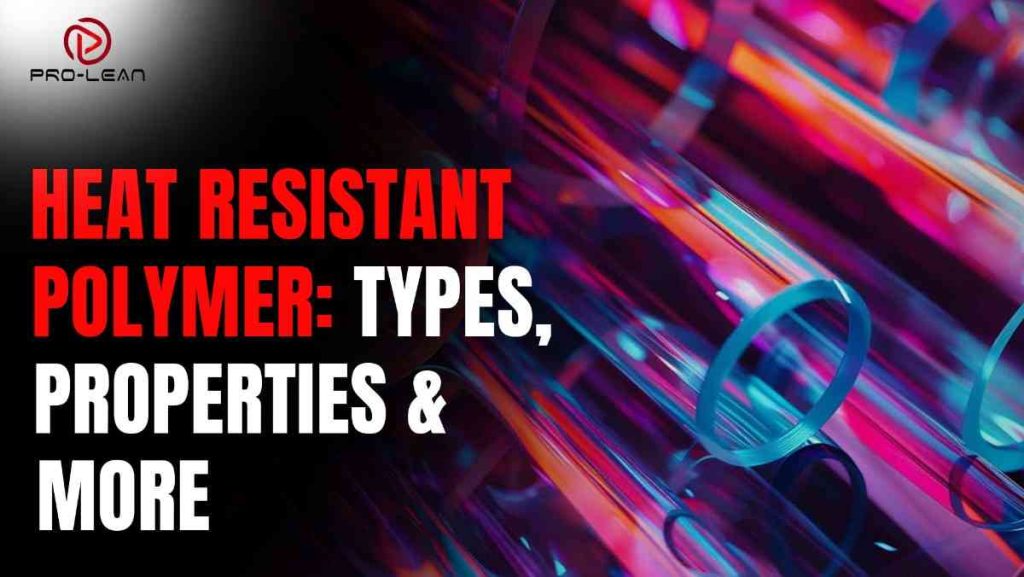
Heat Resistant Polymer: Types, Properties & More
Industries require materials that can handle high temperatures without losing size or strength. Heat-resistant polymer has changed the way products are being manufactured in areas such as aerospace, automotive, and electronics.
If you work with punching, laser cutting, or accurate manufacturing, it is essential to know how this advanced material works. This knowledge can play a significant role in helping your business grow and remain competitive.
ProleanTech – Your Custom Parts Provider recognizes that selecting the right heat-resistant plastic can make or break your project’s success. The melting temperature of plastic varies significantly across different polymer types, and choosing incorrectly can lead to costly failures and production delays.
Our CNC Machining Complete Guide provides detailed insights into effectively processing these different polymer structures.
This comprehensive guide explores top-performing high temp plastics, their applications, and how partnering with the proper manufacturer can elevate your industry operations to new heights of efficiency and reliability.
What is Heat Resistant Polymer?
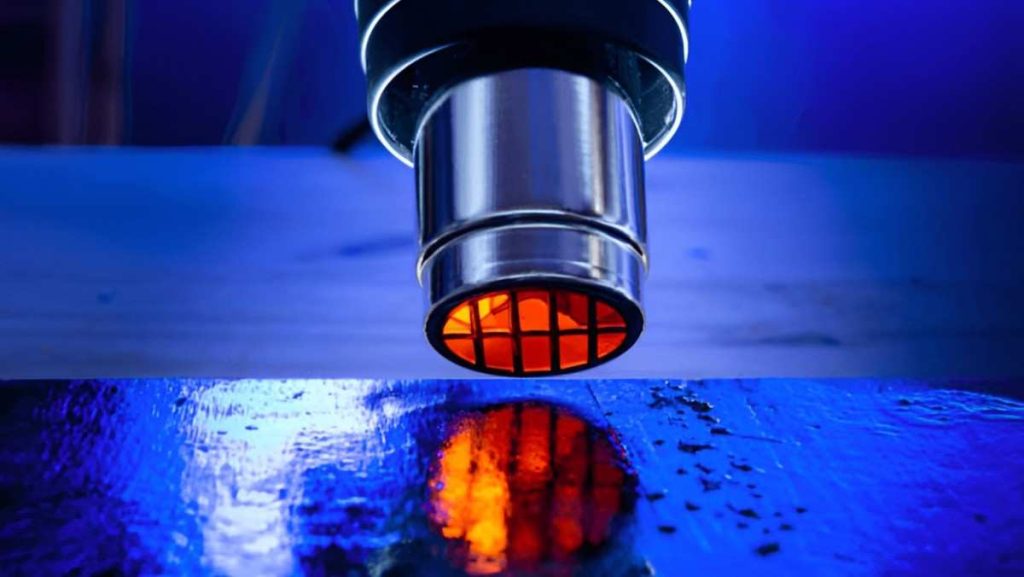
What is Heat Resistant Polymer?
Heat-resistant polymers are special materials designed to remain strong and maintain shape even when exposed to high temperatures. Regular plastic usually becomes soft or breaks quickly when heated, but these advanced polymers can retain their strength, size, and chemical resistance even under intense heat.
Their ability to handle high temperatures comes from their unique molecular design. Characteristics such as cross-linked polymer chains, strong aromatic rings, and organized crystalline areas help prevent them from breaking up when exposed to heat. For those companies that require reliable material in hot working conditions, learning about these polymers is very important for smooth and safe operation.
What sets these materials apart are their glass transition temperature and continuous service temperature ratings. While regular plastic can start to fail at about 80°C, heat resistant polymers can continuously work at temperatures above 300°C without losing performance.
Top 5 Heat Resistant Plastics
Selecting the right high-temperature plastics for your industrial applications requires understanding each material’s unique performance characteristics and limitations. The following five heat-resistant polymers represent the industry’s top performers that can make or break your project’s success.
1. Polyetherimide (PEI)
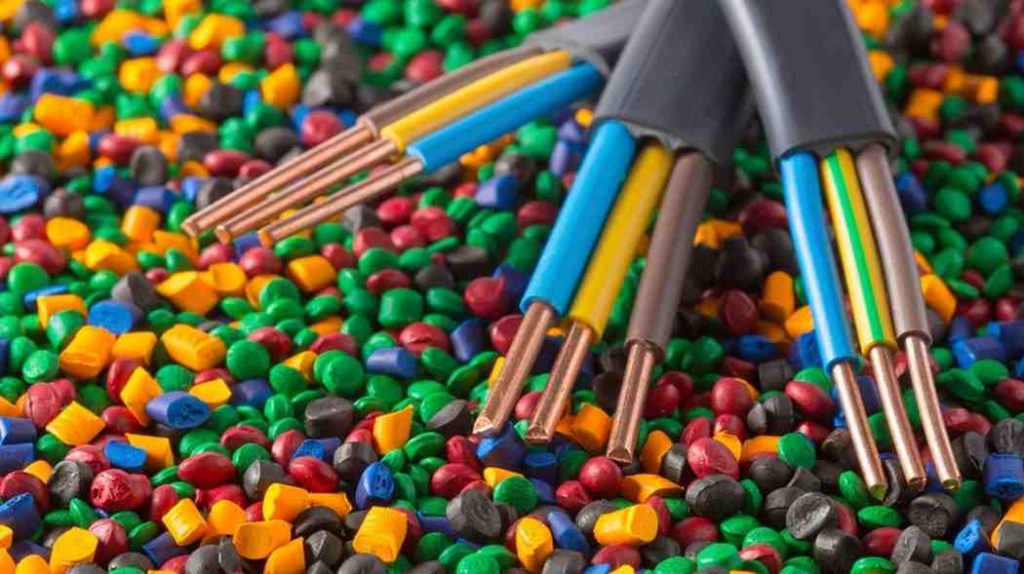
Polyetherimide (PEI)
PEI offers exceptional thermal stability combined with excellent mechanical properties and flame resistance. This amorphous thermoplastic continuously maintains strength and stiffness at temperatures up to 170°C.
Key Properties of PEI:
| Property | Value |
| Tensile Strength (MPa) | 105 |
| Hardness (Rockwell R) | 109 |
| Density (g/cm³) | 1.27 |
| Heat Deflection Temperature (@264 PSI) (°C) | 200 |
| Continuous Service Temperature in Air (°C) | 170 |
| Plastic Melting Temperature (°C) | 217 |
| Flammability (UL 94) | V-0 |
Applications:
- Aircraft interior components requiring flame resistance
- Semiconductor processing equipment handling corrosive chemicals
- Medical sterilization trays withstand repeated autoclave cycles
- Automotive under-hood components exposed to engine heat
- Electronics housings requiring dimensional stability
| Advantages | Disadvantages |
| Excellent flame resistance | Higher cost than standard plastics |
| Chemical resistance to acids/bases | Limited availability in some grades |
| Transparent to translucent options | Processing requires high temperatures |
| Good electrical properties | Notch sensitivity in some applications |
| Steam sterilizable | UV degradation without stabilizers |
2. Polyether Ether Ketone (PEEK)
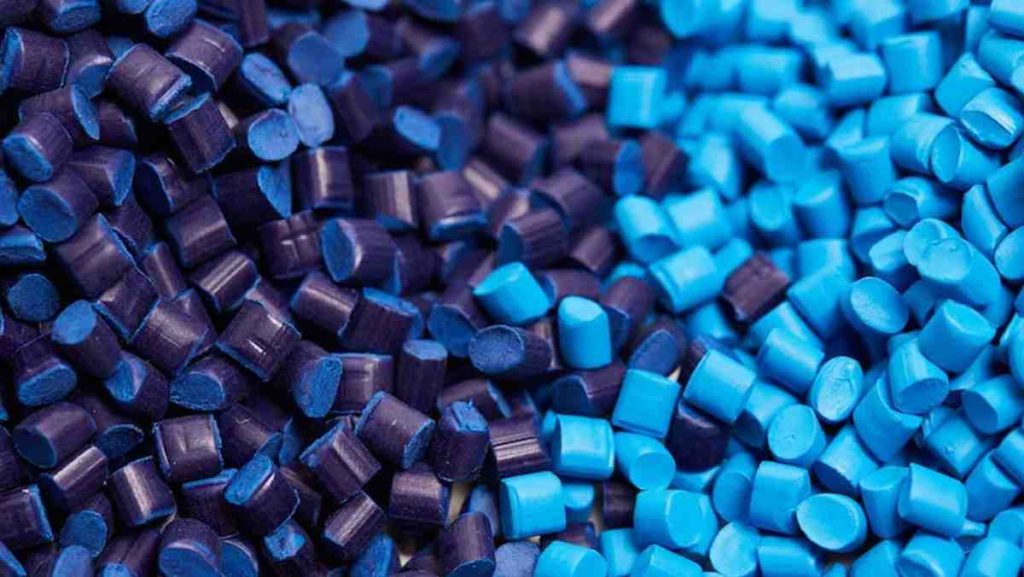
Polyether Ether Ketone (PEEK)
PEEK represents the pinnacle of engineering thermoplastics, offering outstanding chemical resistance and mechanical properties at temperatures approaching 250°C. This semicrystalline polymer excels in the most demanding applications.
Key Properties of PEEK:
| Property | Value |
| Tensile Strength (MPa) | 110 |
| Hardness (Rockwell R) | 126 |
| Density (g/cm³) | 1.31 |
| Heat Deflection Temperature (@264 PSI) (°C) | 160 |
| Continuous Service Temperature in Air (°C) | 249 |
| Plastic Melting Temperature (°C) | 340 |
| Flammability (UL 94) | V-0 |
Applications:
- Oil and gas downhole components surviving extreme conditions
- Aerospace bearings and seals require long-term reliability
- Medical implants demand biocompatibility and sterilization resistance
- Chemical processing equipment handling aggressive media
- High-performance automotive components in racing applications
| Advantages | Disadvantages |
| Exceptional chemical resistance | Premium pricing limits widespread use |
| Outstanding wear resistance | Requires specialized processing equipment |
| Biocompatible and sterilizable | Limited color options |
| Excellent fatigue resistance | Processing temperatures exceed 400°C |
| Radiation resistance | Difficult to bond or paint |
3. Polytetrafluoroethylene (PTFE)
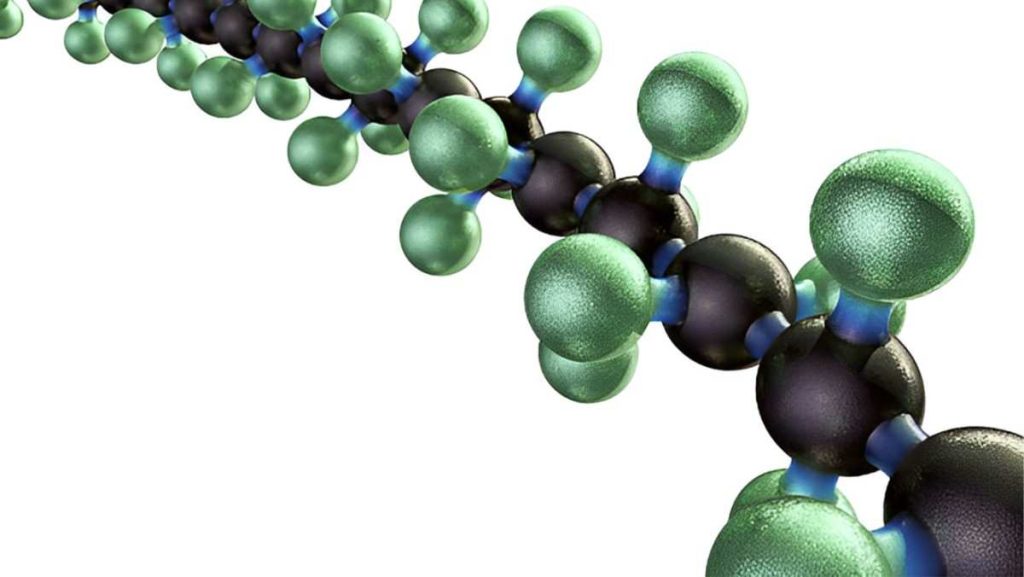
Polytetrafluoroethylene (PTFE) White Tape
PTFE offers unmatched chemical resistance and low friction properties while maintaining stability at temperatures up to 260°C. This fluoropolymer’s unique characteristics make it indispensable in chemical processing and food applications.
Key Properties of PTFE:
| Property | Value |
| Tensile Strength (MPa) | 27 |
| Hardness (Shore D) | 55 |
| Density (g/cm³) | 2.17 |
| Heat Deflection Temperature (@264 PSI) (°C) | 55 |
| Continuous Service Temperature in Air (°C) | 260 |
| Plastic Melting Temperature (°C) | 327 |
| Flammability (UL 94) | V-0 |
Applications:
- Chemical processing seals and gaskets resisting aggressive chemicals
- Non-stick cookware coatings maintain performance through repeated heating
- Electrical insulation in high-temperature wiring applications
- Pharmaceutical equipment requires contamination-free surfaces
- Industrial bearings operating in corrosive environments
| Advantages | Disadvantages |
| Virtually universal chemical resistance | Low mechanical strength |
| Lowest coefficient of friction | Difficult to bond or machine |
| Non-stick surface properties | Cold flow under sustained load |
| Excellent electrical insulation | Limited wear resistance |
| FDA approved for food contact | Expensive compared to conventional plastics |
4. Polybenzimidazole (PBI)
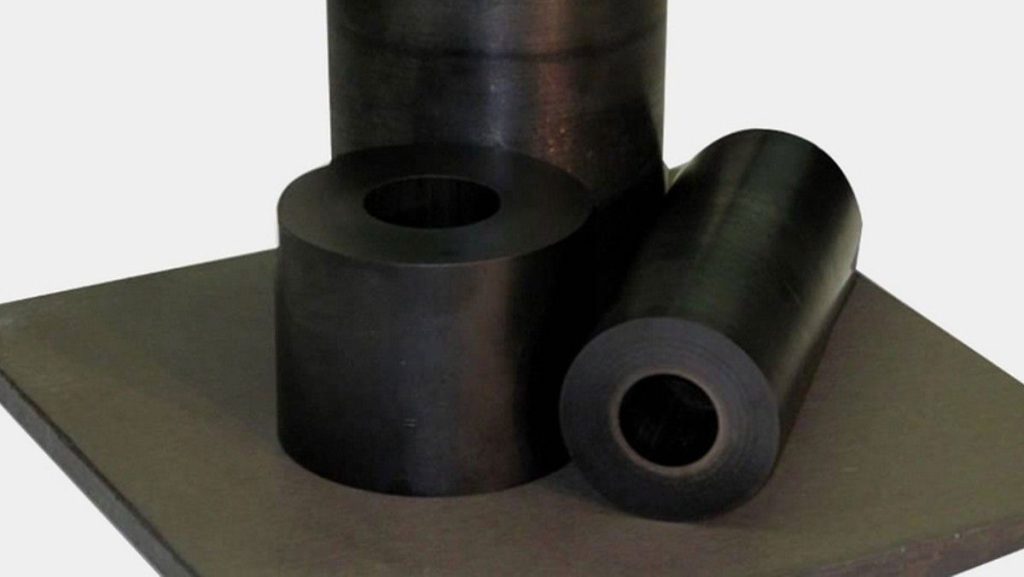
Polybenzimidazole (PBI)
PBI represents the ultimate thermal stability, maintaining properties at temperatures exceeding 400°C. This exceptional heat-resistant plastic serves critical applications where other materials cannot survive.
Key Properties of PBI:
| Property | Value |
| Tensile Strength (MPa) | 150 |
| Hardness (Rockwell E) | 78 |
| Density (g/cm³) | 1.43 |
| Heat Deflection Temperature (@264 PSI) (°C) | 435 |
| Continuous Service Temperature in Air (°C) | 400 |
| Plastic Melting Temperature (°C) | Does not melt |
| Flammability (UL 94) | V-0 |
Applications:
- Aerospace engine components withstanding extreme thermal cycling
- Industrial furnace components requiring dimensional stability
- Fire-resistant textiles protect personnel in hazardous environments
- Nuclear industry applications demanding radiation resistance
- High-temperature electrical connectors maintain conductivity
| Advantages | Disadvantages |
| Highest continuous service temperature | Extremely expensive |
| Excellent flame resistance | Difficult processing requirements |
| Outstanding chemical resistance | Limited availability |
| Radiation resistance | Requires specialized fabrication techniques |
| Dimensional stability at high temps | Long lead times for custom parts |
5. Polydicyclopentadiene (pDCPD)
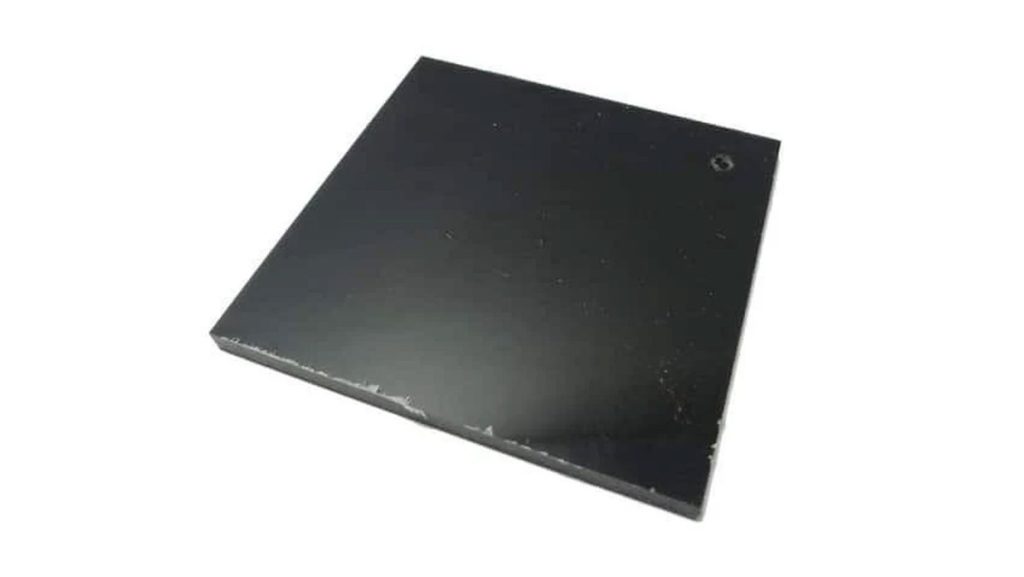
Polydicyclopentadiene (pDCPD) Sheet
pDCPD combines excellent thermal stability with outstanding impact resistance and chemical compatibility. This thermoset polymer offers unique processing advantages through reaction injection molding.
Key Properties of pDCPD:
| Property | Value |
| Tensile Strength (MPa) | 55 |
| Hardness (Shore D) | 80 |
| Density (g/cm³) | 1.03 |
| Heat Deflection Temperature (@264 PSI) (°C) | 140 |
| Continuous Service Temperature in Air (°C) | 120 |
| Glass Transition Temperature (°C) | 155 |
| Flammability (UL 94) | HB |
Applications:
- Automotive body panels requiring impact resistance and thermal stability
- Agricultural equipment housings are exposed to chemicals and weather
- Construction equipment components demand durability
- Marine applications requiring corrosion resistance
- Industrial enclosures protecting sensitive equipment
| Advantages | Disadvantages |
| Excellent impact resistance | Lower continuous service temperature |
| Good chemical resistance | Thermoset limits recyclability |
| Low density for weight savings | Limited color stability |
| Cost-effective for large parts | Requires specialized tooling |
| Fast cure cycles | Post-cure requirements |
When considering CNC Machining Vs Injection Molding for these materials, processing method selection significantly impacts final part performance and cost-effectiveness.
Try Prolean Now!
Melting Point of Plastics – Chart
Understanding temperature capabilities across different polymer types helps manufacturers make informed decisions. The following melting point of plastics chart provides essential thermal data for common heat-resistant materials:
| Polymer Type | Melting Point (°C) | Continuous Service Temp (°C) | Glass Transition Temp (°C) |
| PEI | 217 | 170 | 215 |
| PEEK | 340 | 249 | 143 |
| PTFE | 327 | 260 | -97 |
| PBI | Does not melt | 400 | 430 |
| pDCPD | N/A (Thermoset) | 120 | 155 |
This comparison demonstrates why selecting appropriate materials matters for high-temperature applications. Standard plastics fail where specialized heat-resistant varieties excel.
Amorphous vs. Semicrystalline Plastics
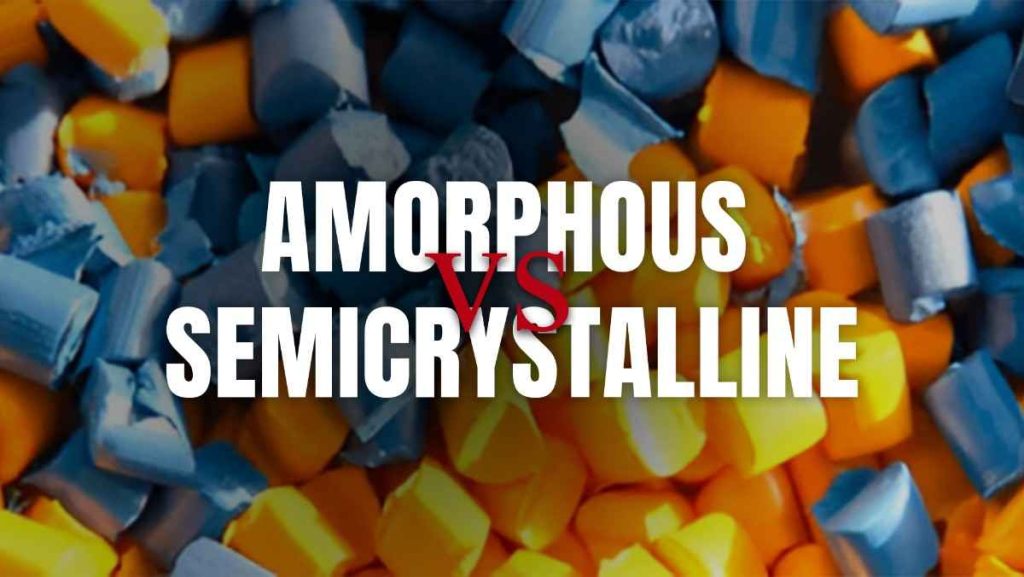
Amorphous vs. Semicrystalline Polymers
How heat-resistant plastic is made at the molecular level significantly affects how well it handles the heat. Amorphous polymers have molecules arranged randomly. This makes them clear and gives them qualities in all directions, but they usually do not oppose the heat. These plastics do not suddenly melt – they slowly become soft at various temperatures.
Semicrystalline polymers are different. They have both clean, red areas (crystalline parts) and messy, disorganized (unknown parts). The ordered parts strengthen these plastics; when warm, they are more resistant to chemicals, and when warm, they are more difficult overall. They can look cloudy and behave differently in different directions.
Knowing these differences helps manufacturers choose the right plastic for each specific job.
Thermal Properties of Heat Resistant Plastic
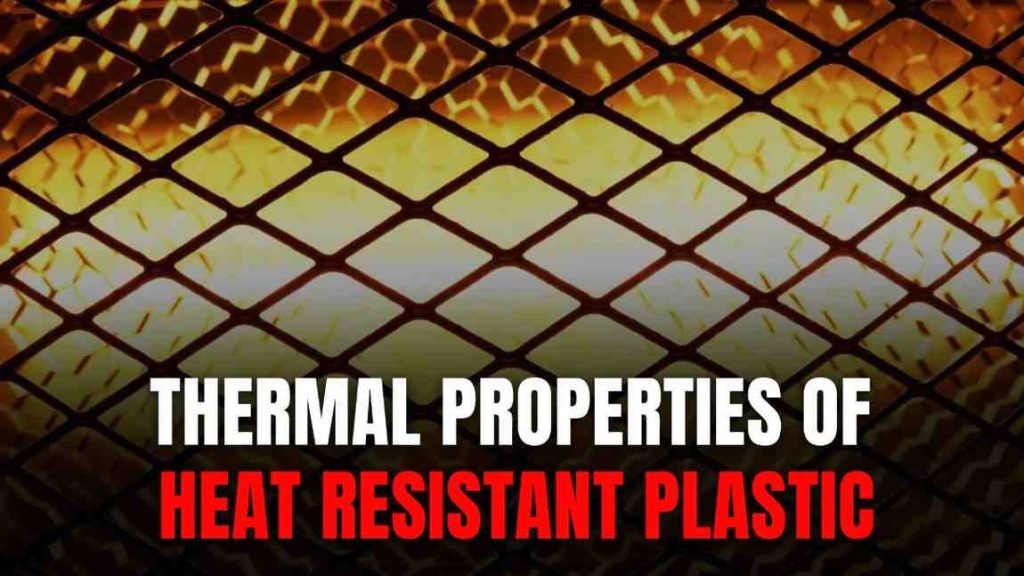
Thermal Properties of Heat Resistant Plastic
Several vital critical properties should be considered when selecting plastic for high-temperature use. These properties help determine how well the plastic can perform under heat. Here are the major significant properties:
1. Heat Deflection Temperature (HDT)
This is the temperature at which the plastic starts to bend or lose its shape when pressure is applied at high heat. This is very important for parts that must keep their size and strength under load.
2. Continuous Service Temperature
The material can handle the highest temperature for a long time without losing its essential properties. This property benefits products used in hot or harsh conditions over months or years.
3. Melting Point
The melting point for each type of plastic can be very different. Some plastic melts at low temperatures and are easy to size. But high-performance plastic can be strong and solid at temperatures above 300°C. Knowing the melting point helps you choose the right plastic for your job.
Understanding these properties allows you to choose the correct heat-resistant plastic that meets the needs of your industry, temperature, and performance expectations.
Methods for Improving Heat Resistance
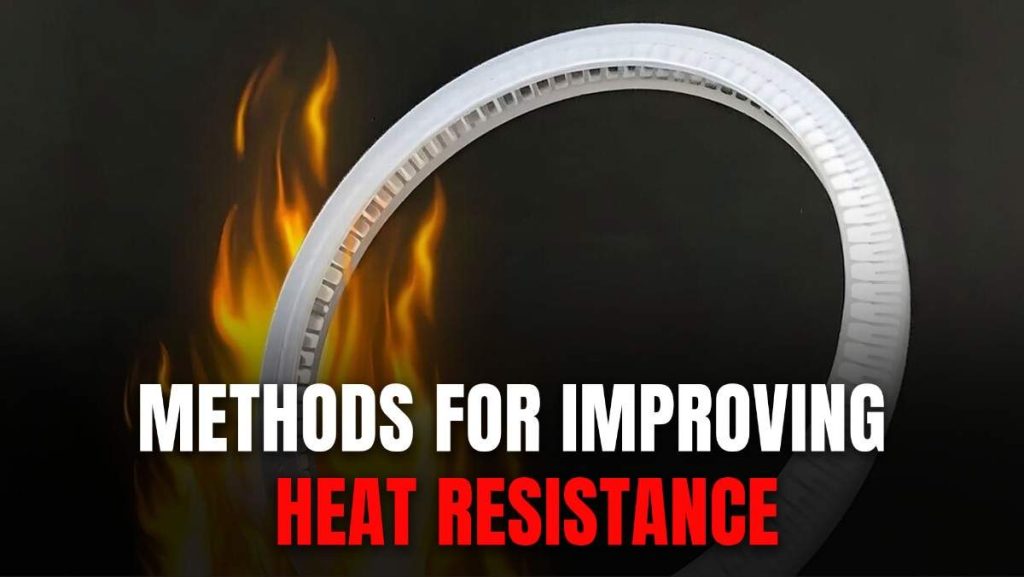
Methods for Improving Heat Resistance
There are many ways to improve how well polymers handle heat, beyond what they can do independently. These methods focus on making the material more potent, stable at high temperatures, and long-lasting. Each approach sometimes targets various aspects of thermal performance, affecting other properties.
- Fiber Reinforcement: Adding strong fiber such as glass, carbon, or polymers makes them hard and more heat resistant. It also reduces how much the material spreads when heated.
- Chemical Modification (cross-linking): Cross-linking between polymer chains creates a 3D structure that is better in summer. This thermoset is very useful for plastics that need to resist very high temperatures.
- Additives for Heat Resistance: Adding special chemicals such as flame retardants, heat stabilizers, or antioxidants helps to last longer at high temperatures. However, these additives can also change things, such as how clear plastic is or how easy it is to shape it.
Read More: Small-batch CNC Machining
What About Cold Temperatures?
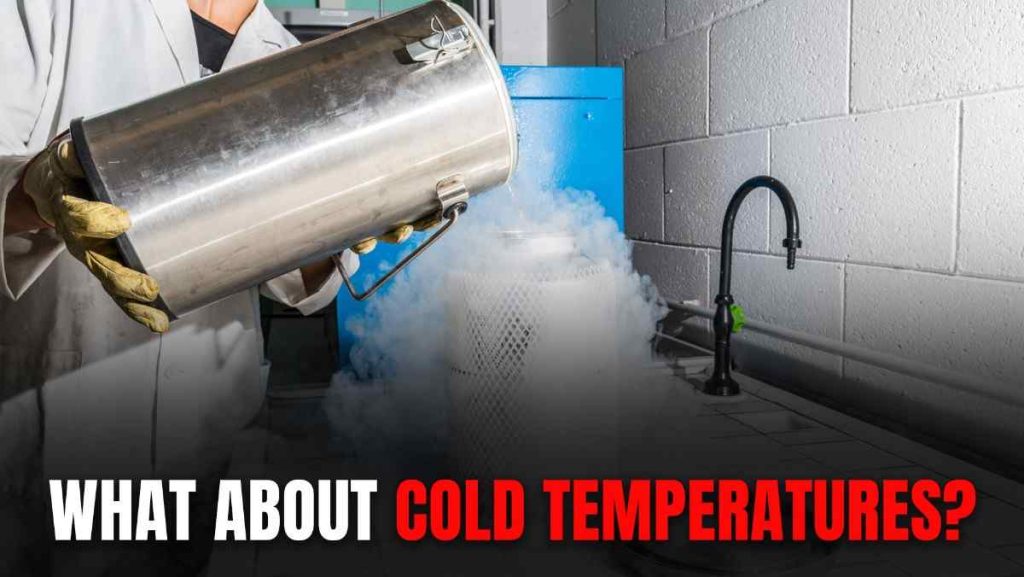
What About Cold Temperatures?
While heat resistance is often the primary focus, how a material behaves at low temperatures is equally essential when choosing plastic. Many plastics that handle heat well can be rigid and easily break when temperatures fall below zero. This can cause severe failure in icy conditions.
The glass transition temperature is a significant point where a plastic’s soft, non-crystalline parts become hard and brittle. Partially crystalline polymers usually improve at low temperatures because their crystal parts help keep them flexible and resistant to effect.
The ability to handle thermal cycling is essential when the temperature changes significantly. The material should handle repeated heating and cooling without making cracks from stress or changing its size.
Our China CNC Machining capabilities enable testing of prototype parts under various thermal conditions.
Try Prolean Now!
What Polymers Are Heat-Resistant?
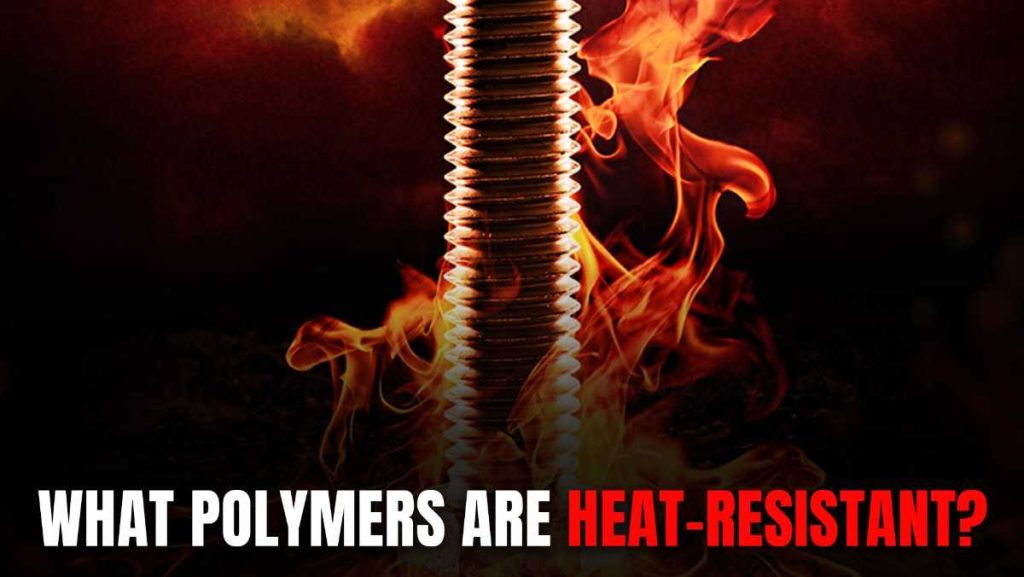
What Polymers Are Heat-Resistant?
Some of the most heat-resistant plastics are polyimides (PI), polybenzimidazoles (PBI), polyether ether ketones (PEEK), and polyetherimides (PEI). These materials can keep their size and strength at high temperatures up to more than 400 ° C from 200 ° C to a more extended period.
Fluoropolymers such as PTFE and PFA are also highly stable in heat and resist strong chemicals. Liquid crystal polymers (LCP) can remain strong at high temperatures and are still easy to shape during construction.
Thermoset plastics such as bismaleimides and polyimide resins provide excellent heat resistance as they form strong cross-linked bonds. However, they are melted and reused, requiring special processing stages to make parts.
What Plastic Can Withstand 400 Degrees?
Polybenzimidazole (PBI) is the best plastic to withstand continuous heat up to 400°C. It still keeps its strength and shape when other plastic breaks perfectly at such high temperatures.
Polymides (PI) can also handle 400°C, but only briefly, making them useful in aerospace and electronics. When mixed with carbon fiber, these materials can handle even more stress and heat, while also being strong.
Particular fluoropolymers, such as perfluoroalkoxy (PFA), can also survive at 400°surviveut only for a short time. Nevertheless, their strength can be weak, so they are not ideal for structural use at these extreme temperatures.
What Plastic Cannot Be Melted on Heating?
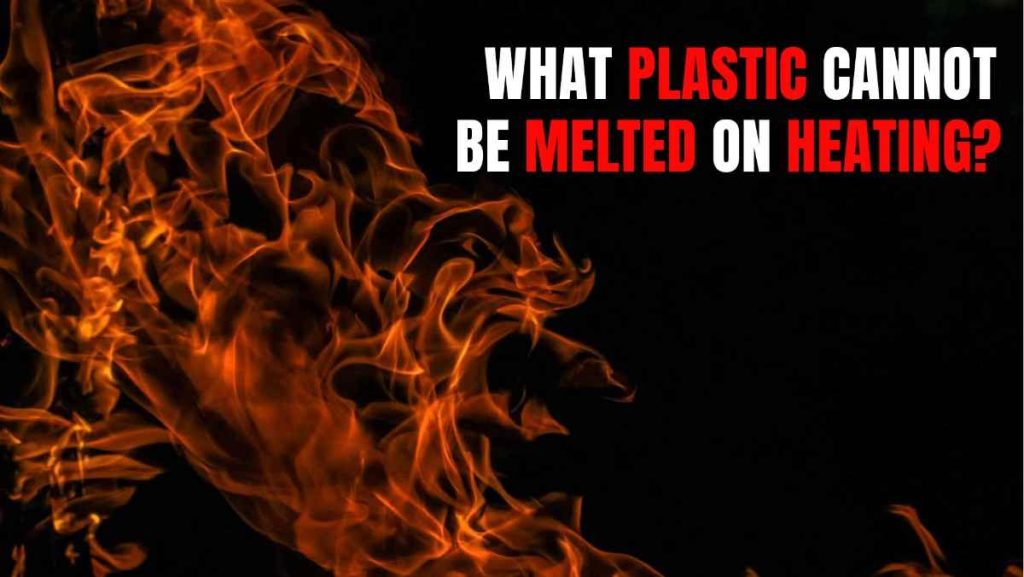
What Plastic Cannot Be Melted on Heating?
Thermoset polymers cannot be melted by heating due to their tightly attached molecular chains, known as cross-links. After this material is rigid or recovers, they do not turn into a liquid when it is too hot. Instead, they break or decompose.
Polybenzimidazole (PBI) is a special type of thermoplastic that does not melt like most plastics. It remains solid and begins to break down only at high temperatures, more than 500°C, without liquid.
Some materials, such as excessively strong polyamides and other strong thermosets, keep their solid form under excessive heat until they degrade chemically. This makes them useful for fire-resistant products, but this also means that they are difficult to recycle.
What Is the Most Thermally Stable Polymer?
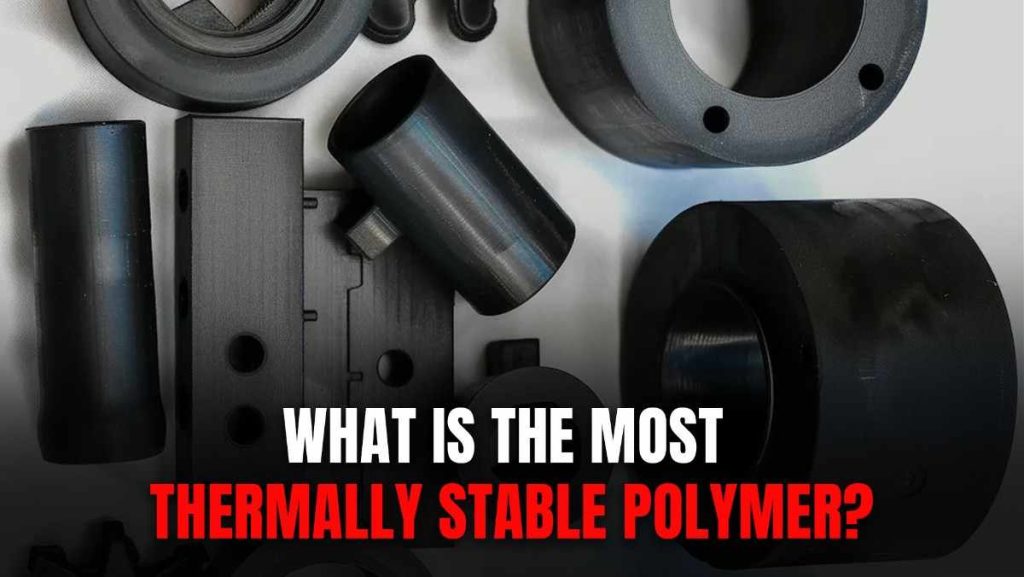
What is the Most Thermally Stable Polymer?
Polybenzimidazole (PBI) is known as the most heat-resistant polymer. It can keep its strength and properties even when the temperature remains above 400°Clonge. This is due to its strong ring-like (aromatic) structure and hydrogen bonds between its chains, making it very heat-resistant.
The next is polyimides, which can also handle high heat. They work well at temperatures around 300°C and still have meretainical strength. Due to this balance between heat resistance and ease of use in making parts, polyimides are often used.
Carbon-carbon composites are not true polymers but are used when extremely high heat resistance is required. These materials can remain strong even when the temperature reaches about 2000°C, until there is no oxygen. This makes them useful for the most extreme structural applications.
What Is the Strongest Heat-Resistant Plastic?
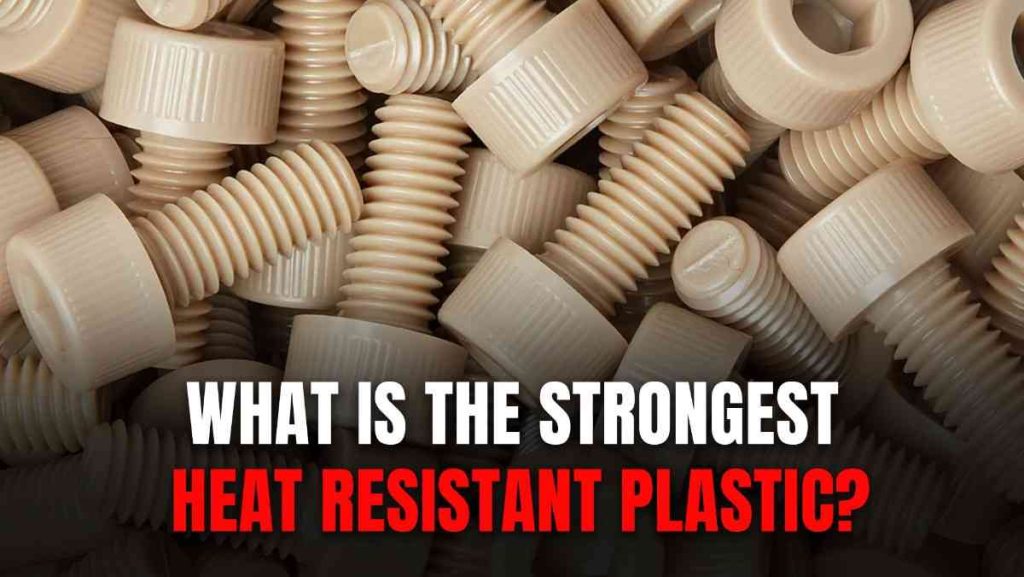
What is the Strongest Heat-Resistant Plastic?
PEEK (Polyether Ether Ketone) is one of the strongest and most heat-resistant plastics. It has tensile strength of more than 100 MPa and can handle continuous use at temperatures up to 249°C, which is very good for challenging structural jobs.
When PEEK is mixed with carbon fiber, it becomes even stronger – the tensile strength is 200 MPa – and still has its ability to handle high heat. These carbon fiber peak materials are often used in airplanes and cars, requiring strong but light parts.
Another plastic, polybenzimidazole (PBI), may be better than heat, but it is not as strong. Therefore, their selection depends on what is more suitable for your use: high strength or heat resistance.
How to Make Plastic Heat-Resistant?
Molecular design methods include adding aromatic rings, increasing crystallinity, and creating a cross-linked network. These changes in the structure help the material resist heat, but it can also be hard and make it more expensive to shape.
Additive methods use special chemicals such as flame retardants, heat stabilizers, and antioxidants to save the material from breaking down at high temperatures. Common heat stabilizers such as hindered phenols and phosphites help the material last longer in high-temperature conditions.
Using strong fibers such as glass, carbon, or ceramic to strengthen the material increases the strength and capacity to handle heat. The type of fiber used and how much it is added to the material.
What Plastic Is the Best Thermal Insulator?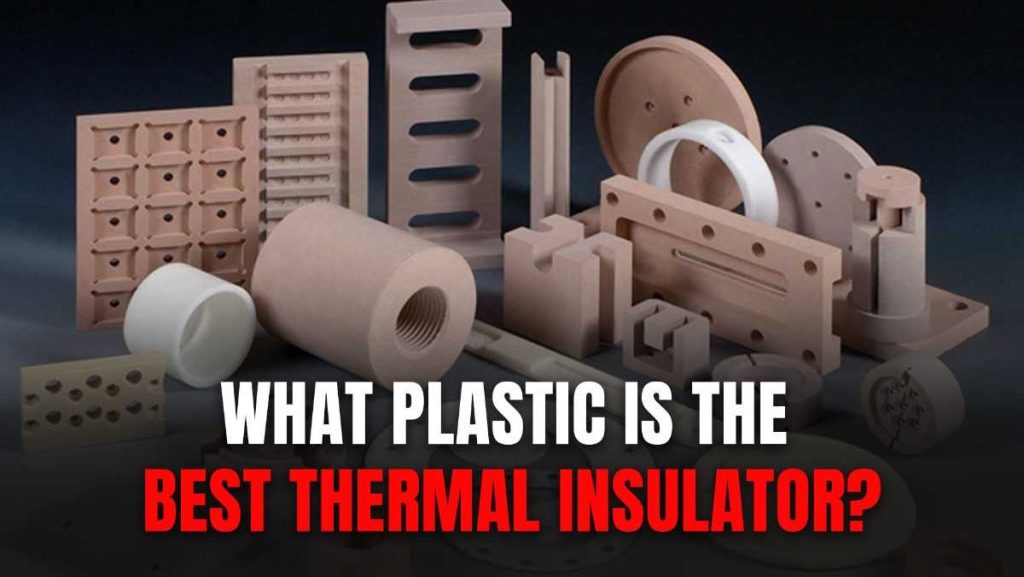
What Plastic is the Best Thermal Insulator?
Cellular or foamed plastic is excellent for thermal insulation because it has low density and many small air pockets. These air pockets reduce heat flow. Common examples such as polyurethane foam, polystyrene foam, and phenolic foam are widely used as they insulate very well.
Between solid plastic types, some material naturally blocks heat better. Two good examples are polytetrafluoroethylene (PTFE) and polyetherimide (PEI). They oppose heat flow and remain strong, maintaining their shape, making them useful in insulation and structure.
For very high temperatures, special plastic with this feature offers top-level performance. These are very effective, but also expensive and challenging. Challenging, they are mainly used for specialized jobs that require the highest thermal protection.
What Is an Example of a Thermoplastic Polymer?
Polyether ether ketone (PEEK) is an excellent example of a high-performance thermoplastic. It is easy to size and process, yet it still has excellent heat resistance nd durability. Unlike thermoset plastic, PEEK can be melted several times without losing its main properties.
Polyetherimide (PEI) is another strong thermoplastic with valuable features. Through viewing, it does not readily catch fire, and can handle high temperatures. Because it has a non-cylinder structure, PEI also shows strength and keeps its shape well.
One of the most significant benefits of thermoplastic is that it can be recycled. They are also easy to process in various forms, making them highly flexible for manufacturing.
What Polymer Can Withstand High Temperatures?
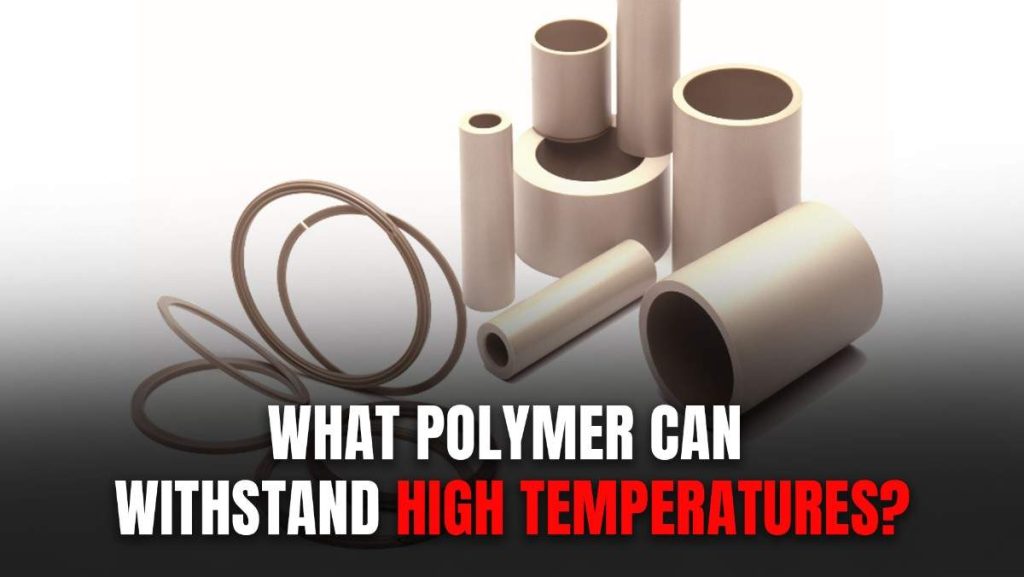
What Polymer Can Withstand High Temperatures?
Multiple polymers excel at high-temperature performance, each offering unique advantages. PEEK withstands continuous exposure to 249°C while maintaining excellent mechanical properties and chemical resistance.
Polyimides serve applications requiring 300°C continuous operation, particularly in electronics and aerospace sectors. Their excellent electrical properties complement thermal stability.
For ultimate temperature resistance, polybenzimidazole (PBI) operates continuously at 400°C. However, processing complexity and cost limit its use to critical applications where alternatives cannot survive.
Why Choose ProleanTech for Heat Resistant Polymer Solutions?
ProleanTech combines deep material expertise with advanced manufacturing capabilities to deliver superior heat-resistant polymer solutions. Our engineering team understands modern industries’ unique challenges and provides tailored recommendations based on your specific requirements.
Our state-of-the-art facilities enable precision machining of the most challenging heat-resistant plastics. From prototype development to full-scale production, we maintain consistent quality and delivery performance that keeps your operations running smoothly.
We don’t just manufacture parts – we partner with you to optimize material selection, design for manufacturability, and achieve cost-effective solutions. Our comprehensive approach ensures your project’s success from concept through production.
Partner With ProleanTech for Material Selection Excellence

Proleantech for Material Selection Excellence
Choosing the right heat-resistant polymer means considering how the part needs to be performed, how it will be made, and how much will be spent; a good balance must be found in the midst of it.
At ProleanTech, our skilled engineers help you choose the best material based on the needs of your project. We use advanced methods such as CNC machining, injection molding, and other special processing techniques required to shape and handle high-performance materials.
We know that it is not enough to choose just the right material – how it is processed and controlled during manufacturing is equally essential to get reliable results.
Whether you are making a prototype or ready for complete production, ProleanTech has the tools and the knowledge to handle your project from beginning to end. Our focus on quality and customer satisfaction has helped us create strong partnerships with top companies in many industries.
Conclusion
Heat-resistant polymers are essential for creating new and advanced products in aerospace, cars, electronics, and industrial areas.
To select the right one, it is essential to understand how these materials behave under heat, how they need to be processed, and where they cannot work well. This helps knowledge engineers and designers to choose the best materials for their projects and improve results.
The five main heat-resistant polymers discussed are PEI, PEEK, PTFE, PBI, and pDCPD.- Each has special features that make it useful for some tasks. To use them well, it is necessary to match what the material can handle with what the application needs.
ProleanTech stands ready to support your heat-resistant polymer projects with comprehensive engineering expertise and advanced manufacturing capabilities. Contact us today to discuss how we can help optimize your material selection and manufacturing approach.
Get a quote for your next high-temperature polymer project and expert CNC machining services, and experience the ProleanTech difference in quality, service, and technical excellence.

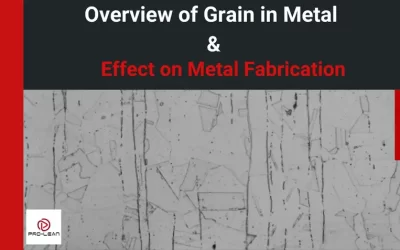
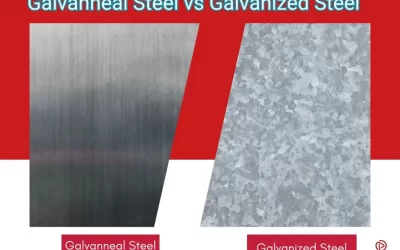
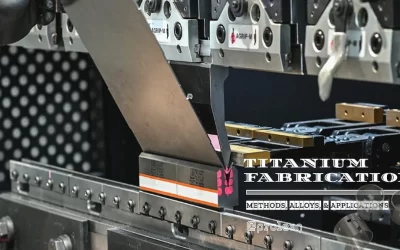
0 Comments